7 of the Easiest Foods You Can Find in Eastern Forests
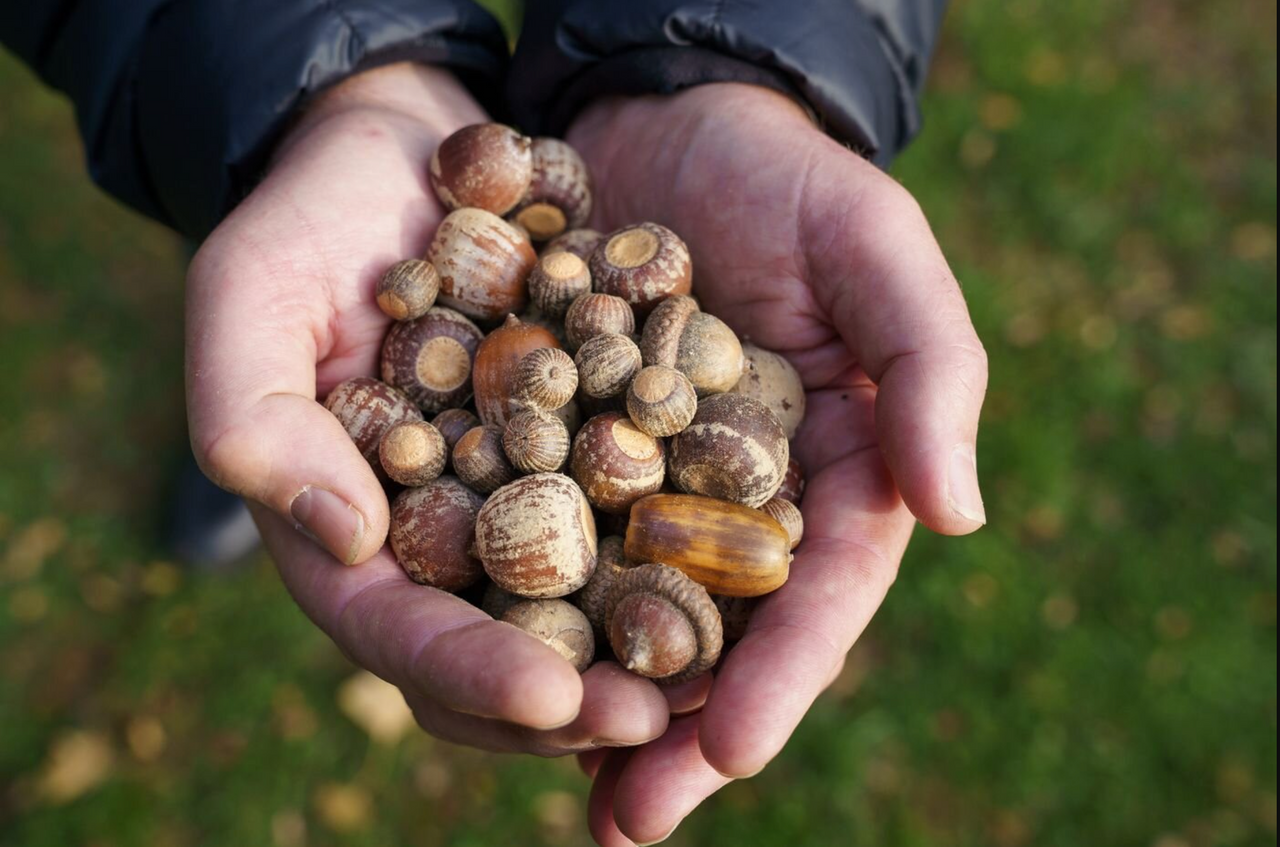
This article provided courtesy of Survival Dispatch. For more on all things survival visit SurvivalDispatch.com.
Food is one of the last things you must obtain in a survival situation, but if you are stuck in the wilderness for an extended period of time, you’ll eventually need to secure sustenance. Fortunately, eastern forests are bursting with edible plants, seeds and animals, which will help provide the nourishment you need to keep going.
Always keep safety at the forefront of your mind: Ingest the wrong plant (or wrong part of the right plant), and you’ll quickly find yourself in an entirely different kind of survival situation. Never eat any plant that you can’t positively identify and always be careful when trying to capture potentially dangerous insects or snakes.
1. Acorns and Other Nuts
Acorns litter the floor of most hardwood forests throughout the eastern United States, and they represent an important food source for jays, squirrels, deer, turkey, pigs and dozens of other animals. Native Americans recognized the considerable number of calories represented by these small nuts, and utilized them in several recipes.Not all acorns are created equally though. Most acorns contain bitter-tasting chemicals called tannins, those of black and red oaks contain much more of the mouth-puckering substance, so try to find and collect white oak acorns if possible.
You can usually identify oaks of the white group by noting the leaves, which have rounded lobes, rather than pointy, spine-tipped lobes that characterize black and red oaks.
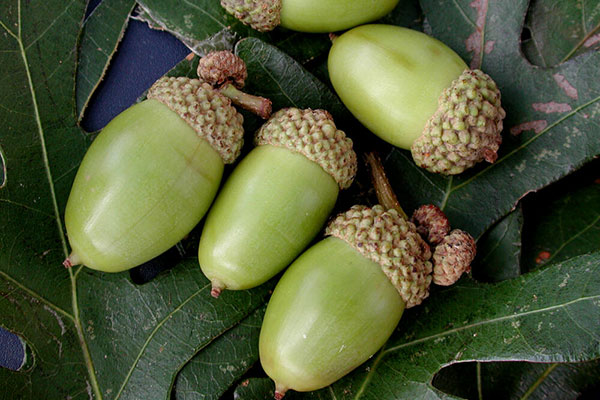
Acorns can be found all year long, but they are generally most common in the fall, when they fall off the trees. Note that oaks produce crops of varying sizes in different years; they may produce twice, thrice or more times as many acorns in these so-called bumper crop years than they do in others. However, not all of the oaks in a forest will produce such a crop in the same year. Accordingly, it is wise to scout around a little and try to find an oak that has carpeted the ground beneath in fat-, protein- and calorie-packed acorns.
It’s best to soak acorns in water for an extended period of time before cooking or consuming them to help leach out the tannins. Just keep changing the water until the acorns no longer turn it brown. Note that any that float are generally infested with a grub or otherwise compromised. Roast the acorns over low heat and enjoy!
2. Insects
The thought of eating a bug often causes even the most rugged survivalists to turn green, but this is largely a cultural problem. Millions of people worldwide consume insects (and other invertebrates, like spiders and scorpions) as part of their daily lives. In a survival situation, they may be one of the most important food sources you can find. You won’t get a full belly by munching on a few crickets, but they may provide you with enough calories to keep going and keep your spirits high, while you extricate yourself from the situation.
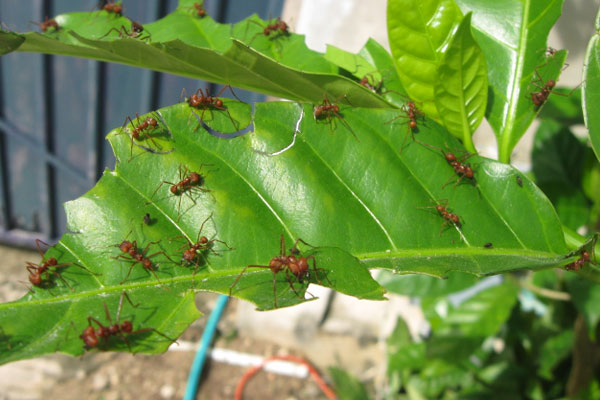
Some of the best insects to collect include ants and crickets. Ants can be collected rather easily by placing a leaf or stick into the mound, letting the ants crawl onto it and then shaking them into a jar or can. They can then be roasted. Be aware that ants should be eaten in moderation, as they contain a large amount of formic acid, which can cause digestive upset.
Crickets should be roasted or pan-fried (you can use any edible fat you may have) before consumption, and most people prefer to remove their legs before eating. The legs won’t harm you, but they aren’t especially edible either. Catch crickets by flashlight as they call at night, or make a trap for them by burying a smooth-sided jar or can flush in the ground and placing some food (a bit of squished fruit works well) in the bottom.
3. Frogs
Frog legs are a down-home delicacy in many parts of the United States, and they make a wonderful food source in a survival situation. Frogs often occur in dense aggregations, particularly during the wet winters of southeastern forests and the rainy springs experienced up north. However, they can be collected almost anytime the temperatures are above about 40 degrees Fahrenheit. You don’t want to eat toads or tree frogs, as most contain dangerous toxins, but bullfrogs, green frogs and leopard frogs have large, edible legs.
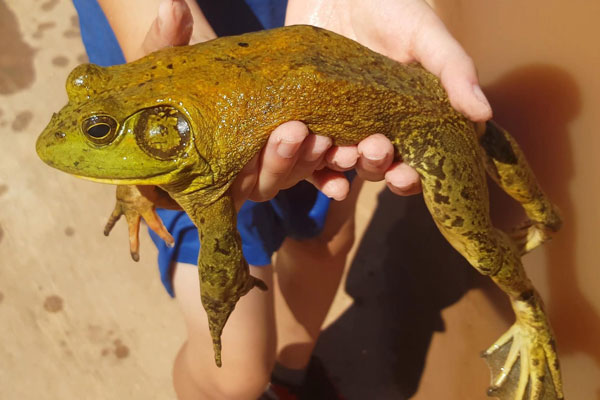
You’ll need a flashlight to have great success hunting for frogs, as most are nocturnal creatures that spend their days hiding in concealed locations. Ideally, you’ll have a headlamp, but if you don’t try to fashion some type of strap that holds the flashlight to your head, so your hands will remain free. You’ll find most edible species lurking in or near ponds, swamps or very sluggish streams.
Head to your hunting grounds shortly before dark to learn the lay of the land and remove any potential obstacles before you start chasing frogs around in the dark. As many 9-year-olds can attest, frogs are often easy to catch by hand, but you can also fashion a two- or three-pronged gig that can be used to spear the frogs, if you lack the reflexes to grab them.
To prepare the legs for cooking, cut the frog’s body in half near the “waist” (the front half of the animal makes great bait for a trap). Remove the skin completely and then cut the legs off at the hip joint. You can roast the legs on a miniature spit, but the best way to prepare them is by pan frying.
4. Crayfish
Many water bodies, from mountain streams to swamps, are bursting with crayfish (or crawfish or crawdads, depending on your cultural bent). These arthropods are not only easy to collect and catch, but quite delicious by backcountry standards. Find crayfish by flipping rocks and logs at the water’s edge (both submerged and on dry land) and be ready to snag them.You can also try to collect crayfish by making a fish basket and adding a small piece of food inside to attract them to the basket. Place the basket near rocks and logs in the water and check it several times per day – especially in the morning.
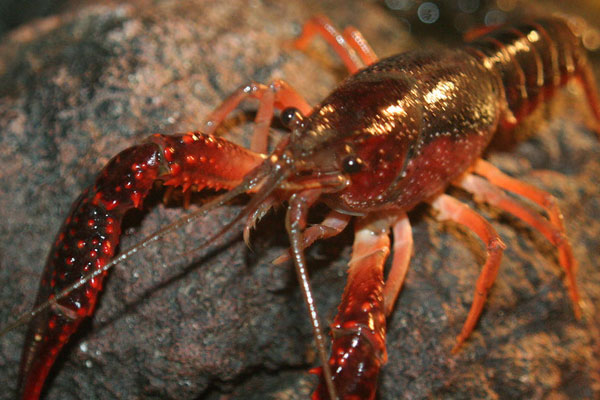
Large crayfish may be able to inflict a strong pinch with their claws, but small ones can be handled with relative abandon – they aren’t exactly coconut crabs. Smack large ones with a stick to incapacitate them or simply hold them by the thorax (the hardened middle portion of their body) to give you the best chance at avoiding the claws.
Always cook crayfish thoroughly before consuming them. Boiling is the preferred method of preparation, but you could also roast or bake them, if that is easier in your situation. The claws and tail contain most of the edible meat, although you can “suck the heads,” if you like.
5. Pine Trees
No, you can’t just rip a pine sapling from the ground and start eating it. Xylem tissue (wood) is inedible to most vertebrates, including humans. But, aside from the wood and outer bark, pine trees possess a few different edible items. Additionally, these items are usually available year-round, making it an especially important resource for the most difficult circumstances.Pine needles are the easiest part to harvest, but they aren’t worth eating, as they don’t offer many usable calories at all. However, they do contain an incredible amount of vitamin C and a few other nutrients, which can help your body perform at its best during such a trying time. Most commonly, pine needles are simply cut up and placed in boiling water to make a mildly citrus-flavored tea, but they can also be used to help flavor and fortify soups or boiled foods.

via danielshrigley.com/
The living inner bark of white pine trees (and several other species) is a nutritious, delicious and ubiquitous food source, but it takes considerable effort and a bit of skill to harvest. Known as phloem, this tissue layer is the green or whitish fibrous material that can usually be found clinging to the inside of a tree’s outer bark. Once scraped from the outer bark, the phloem can be pan fried or roasted and consumed. Note that this practice may kill the tree, so it is only suitable for survival situations.
6. Earthworms
I’ll be honest, I don’t know that I could eat worms; but they are unquestionably valuable as a food source in a survival situation. Worms contain quite a bit of protein and calories for their size, they’re ubiquitous and easily collected. They even contain high amounts of omega-3 fatty acids – the same nutritious oil found in salmon. You just have to get over the gross-factor, but that’s rarely a problem after living with an empty stomach for a few days.You can collect earthworms by digging in dark, damp soil with a stick or shovel, but it is often more efficient to flip rocks and logs, where they can often be found resting right on the surface of the ground. You can also brush away thick leaf litter to reveal the earthworms hiding within. Heavy rainfall will have them clamoring to the surface, where they can be collected en masse. Place the worms in a jar, can or large clamshell while you accumulate the desired number of the slimy creatures.
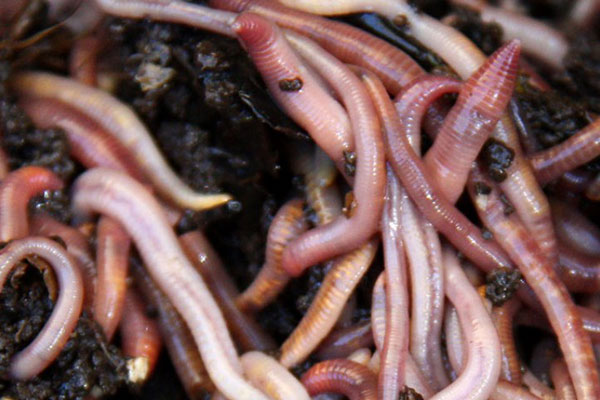
Place the worms in a bucket of water or clean puddle to wash off the bacteria and parasites that may be clinging to their sticky skin. Additionally, this will cause the worms to void the contents of their intestines, which will reportedly make them tastier.
Although you probably wouldn’t die eating them raw, it’s wise to cook earthworms before eating them. Most people like to boil the worms several times, while changing the water each time. This will help remove anything still in their digestive tracts, as well as the mucus covering their bodies. They can now be eaten or roasted before consuming them.
7. Kudzu
Kudzu is actually native to east Asia, but after being introduced to the southern U.S. in 1876, it quickly began growing at an explosive rate (a single plant can grow by as much as 1 foot per day). Now, kudzu can be found from Florida to Massachusetts and west as far as Texas.While kudzu is an environmental plague, it is edible and ubiquitous, making it an attractive food source in survival situations. Kudzu most often grows along sun-drenched forest edges or clearings, but it may also grow under the canopy. Identify kudzu by noting its large leaves consisting of three roughly equally sized leaflets and purple flowers which adorn the plant in the spring and summer. Just be sure not to confuse it with poison ivy, which is obviously not something you want to touch or eat.
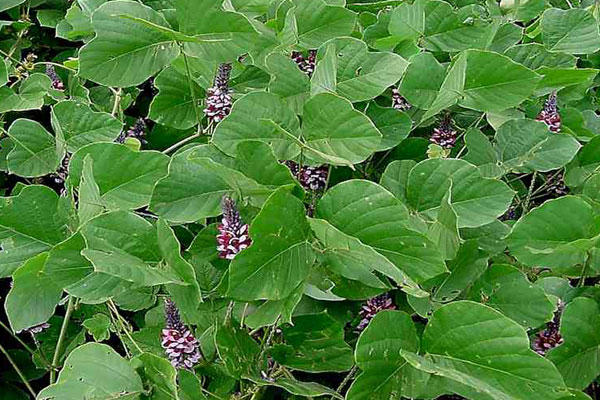
Several parts of the plant are edible (essentially, everything but the vine), but the leaves are the easiest part to collect and consume. While you should wash the leaves after harvesting them, you can prepare them however you like. They can be eaten raw, fried or boiled.
Final Thoughts
When you find yourself in a survival situation, you need to take what Mother Nature provides. Learn how to identify, locate and prepare these various plants and animals to give yourself the best chance of making it out of the forest and back home alive. Just remember to take what the landscape provides, be it kudzu, pine trees, acorn or crayfish.Don’t hesitate to tell us about the easily found food sources in eastern forests that we’ve neglected. You could obviously make an argument for including blackberries, grapes, small fish or snakes on our list, but what else is abundant and edible in eastern forests?
Check out the latest news
Zero risk. Only gains.
100% Risk Free*
Your complete satisfaction guaranteed or your money back.
Made by Real People
Made and packaged in our facility right here in the USA. Any issues, just give us a call.
Free Shipping
Free shipping on orders $199+. Always out the door in a day or two straight to your home.
For more information, please visit our Terms of Service. Lean More











